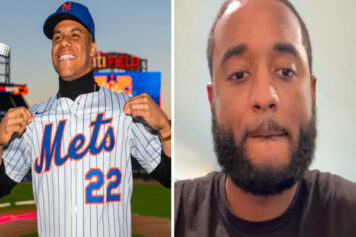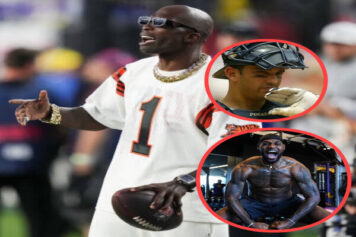Somewhere along the way, baseball writers got it wrong when they left out black ballplayers like Curt Flood,Dick Allen,Frank White,Lou Whitaker and Dave Parker in their balloting for the National Baseball Hall of Fame. The Hall of Fame claims to immortalize the greats of the game, but all of these men, for large stretches of their Major League careers, were of the best at their positions.
Few ballplayers, of course, have had careers without a down season or two. Greats such as Babe Ruth, Stan Musial, Mickey Mantle, Warren Spahn and Bob Feller stumbled off into their retirement amid pedestrian performances. The body of their work, however, is how baseball writers judged their careers.
The same standard should apply to the careers the careers of Flood, Allen, White, Whitaker and Parker.
That’s what troubles Bob Kendrick a bit. Kendrick, President of the Negro League Baseball Museum in Kansas City, knows that two people can look at the same set of baseball statistics and evaluate them differently. It’s the “glass half-empty, half-full” conundrum, he says. But when so many ballplayers whose careers have been slighted happen to be black, Kendrick pauses to wonder: Isn’t there an alternative way to keep these men’s legacies alive?
His answer is yes.
Already in charge of an institution that has a mission similar to the Hall of Fame, Kendrick decided that the museum could fix this injustice by honoring Cooperstown-worthy ballplayers of color with a shrine of its own.
He plans to launch the Hall, which will be called the “Hall of Game,” inside the museum at some point during the 2013 season. Its criteria for induction will be high, as it looks to pay homage to Major League ballplayers who played with the same passion, determination and skill as those Negro Leaguers whose spirits and exploits live inside the museum.
“Buck (O’Neil) described the museum as honoring those people who built the bridge, and the next step for us has been to start recognizing those who crossed over,” Kendrick says. “I don’t think there’s a better way to help people understand how good the guys in the Negro Leagues were than by making guys, today, ‘honorary’ Negro Leaguers.”
So he will assemble a panel of baseball experts, and they will sit down and look at the statistics of ballplayers who began their careers after the Negro Leagues disappeared around 1960. The Hall of Game won’t ignore the black men who are now in Cooperstown; the Henry Aarons, Bob Gibsons and Reggie Jacksons will be surefire inductees. But so will men like Barry Bonds, who holds the two most sacred records in baseball: most home runs (73) in a season; most home runs (762) in a career.
His rejection is a sorry indictment of a flawed voting system. For the Hall of Fame was never supposed to be a popularity contest. Nor was it supposed to be used by baseball writers to deconstruct an era to which their callousness and journalistic sloppiness contributed.
No doubt, Bonds, Allen and Whitaker were difficult characters to deal with, but so were Hall of Fame pitcherSteve Carlton and the great outfielder Ty Cobb. No doubt, too, that the taint from steroid allegations hung over Bonds in the recent Hall of Fame balloting, but the taint hangs over an entire era. Can baseball writers who have ballots pretend the “Steroid Era” never occurred?
As easy as it is to claim Kendrick’s idea is a knee-jerk response to what the baseball writers did to Bonds in their most recent induction vote, it would be inaccurate. That claim would misjudge what the Hall of Game is all about. More than anything else, it will be a way to honor men who embodied the derring-do spirit of Negro Leaguers.
“It is something that Dave Winfield often says,” Kendrick explains. “He was probably most flattered when he heard Negro League players tell him, ‘You coulda played with us.’”
So, along with Aaron, Gibson, Jackson and Winfield, the Hall of Game will salute players whom the baseball writers slighted. It will acknowledge the historical contribution of a freedom fighter like Flood, perhaps the best center fielder of the 1960s; it will reward the years of great play of Whitaker and White at second base; and it will embrace the character flaws of Parker and Allen, sluggers whose bats and gloves made them, if not necessarily for their entire careers, stars of stars.
Kendrick’s plan is to do what the baseball writers haven’t done or refuse to do: judge greatness without being judgmental.



